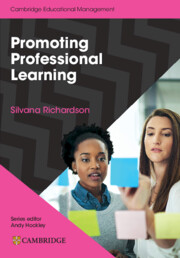Refine listing
Actions for selected content:
1299955 results in Books
Chapter 4 - Giovanni Conversini’s Search for Vocation
-
- Book:
- Family, Vocation, and Humanism in the Italian Renaissance
- Published online:
- 18 December 2025
- Print publication:
- 29 January 2026, pp 113-147
-
- Chapter
- Export citation
5 - The African Continental Free Trade Area Agreement (AfCFTA) as a Legal Regime
- from Part II - Prosperity and Specific Regional Trade Arrangements as International Regimes
-
- Book:
- Regional Trade Agreements, Prosperity and the Global South
- Published online:
- 23 December 2025
- Print publication:
- 29 January 2026, pp 115-139
-
- Chapter
- Export citation
Copyright page
-
- Book:
- Writing Politics in Modern Britain
- Published online:
- 22 December 2025
- Print publication:
- 29 January 2026, pp iv-iv
-
- Chapter
- Export citation
Preface
-
- Book:
- Family, Vocation, and Humanism in the Italian Renaissance
- Published online:
- 18 December 2025
- Print publication:
- 29 January 2026, pp vii-viii
-
- Chapter
- Export citation
1 - The Challenge of Implementing Growing Policy Stocks
-
- Book:
- Triage Bureaucracy
- Published online:
- 24 December 2025
- Print publication:
- 29 January 2026, pp 1-20
-
- Chapter
-
- You have access
- Open access
- HTML
- Export citation
Part IV - Writing from Below
-
- Book:
- Writing Politics in Modern Britain
- Published online:
- 22 December 2025
- Print publication:
- 29 January 2026, pp 171-210
-
- Chapter
- Export citation
Introduction
-
- Book:
- Five Economies of World Literature
- Published online:
- 09 December 2025
- Print publication:
- 29 January 2026, pp 1-15
-
- Chapter
- Export citation
Contents
-
- Book:
- Making Babies in Early Modern England
- Published online:
- 12 December 2025
- Print publication:
- 29 January 2026, pp vii-vii
-
- Chapter
-
- You have access
- Open access
- HTML
- Export citation
Index
-
- Book:
- The Question of Solidarity in Law and Politics
- Published online:
- 22 December 2025
- Print publication:
- 29 January 2026, pp 281-284
-
- Chapter
-
- You have access
- Open access
- HTML
- Export citation
2 - Pregnancy, Record-Keeping and Respectability
-
- Book:
- Making Babies in Early Modern England
- Published online:
- 12 December 2025
- Print publication:
- 29 January 2026, pp 50-81
-
- Chapter
-
- You have access
- Open access
- HTML
- Export citation
3 - Obituarial Lives
- from Part I - Views from Westminster
-
-
- Book:
- Writing Politics in Modern Britain
- Published online:
- 22 December 2025
- Print publication:
- 29 January 2026, pp 64-84
-
- Chapter
- Export citation
Copyright page
-
- Book:
- Art and Anti-Racism in Latin America
- Published online:
- 19 December 2025
- Print publication:
- 29 January 2026, pp iv-iv
-
- Chapter
-
- You have access
- Open access
- HTML
- Export citation
5 - Crystal Clear
-
- Book:
- Black Voices in the Halls of Power
- Print publication:
- 29 January 2026, pp 92-108
-
- Chapter
- Export citation
Contents
-
- Book:
- The Question of Solidarity in Law and Politics
- Published online:
- 22 December 2025
- Print publication:
- 29 January 2026, pp v-vi
-
- Chapter
-
- You have access
- Open access
- HTML
- Export citation
Index
-
- Book:
- Family, Vocation, and Humanism in the Italian Renaissance
- Published online:
- 18 December 2025
- Print publication:
- 29 January 2026, pp 214-218
-
- Chapter
- Export citation
Chapter 1 - World Literature as Free Trade
-
- Book:
- Five Economies of World Literature
- Published online:
- 09 December 2025
- Print publication:
- 29 January 2026, pp 16-48
-
- Chapter
- Export citation

Promoting Professional Learning
- Coming soon
-
- Expected online publication date:
- January 2026
- Print publication:
- 31 January 2026
-
- Book
- Export citation
Ituura
-
- Book:
- Peasants to Paupers
- Published online:
- 24 December 2025
- Print publication:
- 29 January 2026, pp 40-43
-
- Chapter
-
- You have access
- Open access
- HTML
- Export citation
12 - Writing for Influence
- from Part VI - The Intellectual Public Sphere
-
-
- Book:
- Writing Politics in Modern Britain
- Published online:
- 22 December 2025
- Print publication:
- 29 January 2026, pp 257-276
-
- Chapter
- Export citation
Introduction
-
-
- Book:
- Art and Anti-Racism in Latin America
- Published online:
- 19 December 2025
- Print publication:
- 29 January 2026, pp 1-28
-
- Chapter
-
- You have access
- Open access
- HTML
- Export citation
